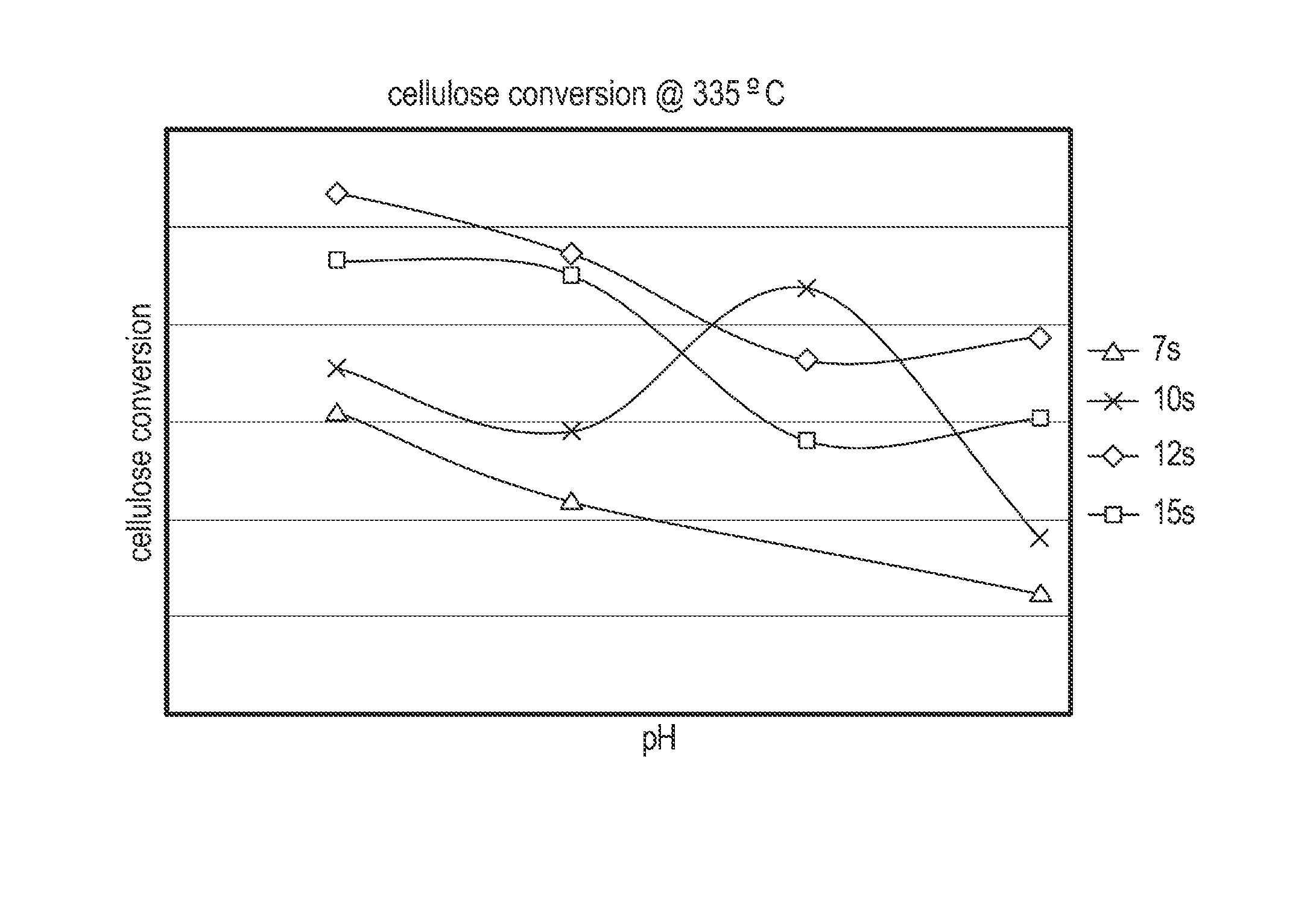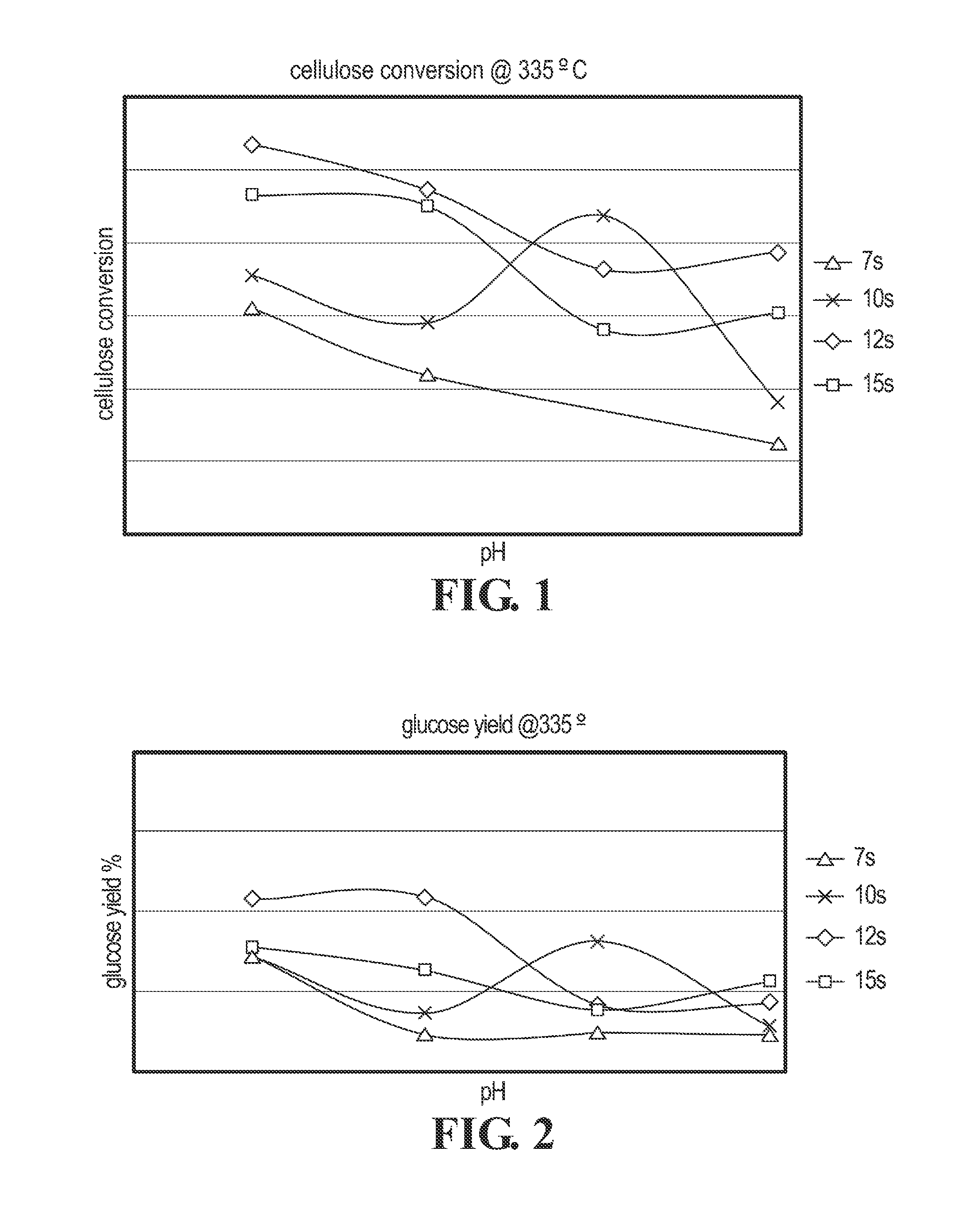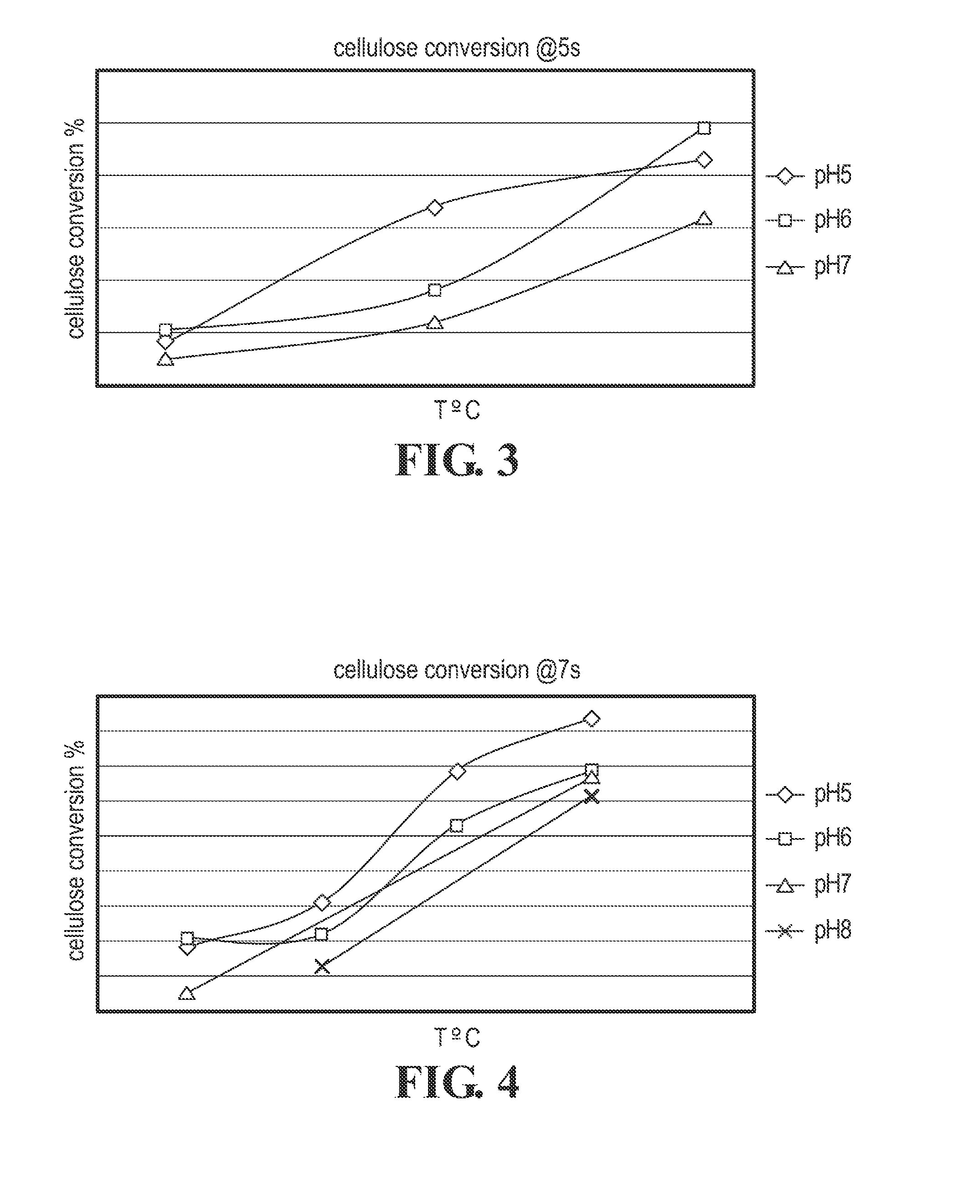Cellulose Hydrolysis with pH Adjustment
a technology of cellulose hydrolysis and ph adjustment, which is applied in the cell field to reduce the rate of glucose degradation and control the rate of cellulose hydrolysis
- Summary
- Abstract
- Description
- Claims
- Application Information
AI Technical Summary
Benefits of technology
Problems solved by technology
Method used
Image
Examples
example 1
[0218]Lignocellulosic biomass was processed via a pre-treatment stage wherein hot compressed water was added to a slurry of the lignocellulosic biomass. Operating conditions were defined as:
[0219]Pre-Treatment Stage
Temperature:250°C.Pressure:100barResidence time:1minute
[0220]The solids from this process were then separated and generally had the compositions as shown in Table 1.
TABLE 1ComponentsPercentage (%)Glucan50 ± 5XylanLignin45 ± 5Ash and others
[0221]The solids were then mixed with water to form a slurry. This feed generally had a pH of about 4.2. It was then ramped up to a temperature of 250° C. and this temperature was maintained for a small residence time (defined as Pre-heating Stage). Slurry from this stage was then impinged with supercritical water (1:1 weight ratio with respect to the slurry) so that the slurry temperature was immediately raised to reaction temperature. After maintaining this temperature for a certain residence time (defined as Stage ...
example 2
[0225]A solid containing 44.5% glucan and 7.3% xylan, was collected from a pretreatment run at 240±10° C. and 1.7±0.5 minutes. Tap water was used to make a 4% slurry and had an initial pH of 4-4.2. For each run, the preheat condition was kept same as 250±5° C. for 20 seconds, the hydrolysis stage was conducted using different temperature and residence time. Slurry pH was increased to different values by adding certain amount of sodium hydroxide (NaOH) solution. After solid / liquor separation, solid and liquor samples were analyzed according to the National Renewable Energy Laboratory (NREL) standard procedures. Table 2 lists the detailed experimental conditions.
TABLE 2TemperatureResidence TimeSamplepH(° C.)(seconds)1532072533510353501245365155632076633510763501286365159732071073351011735012127365151383207148335101583501216836515
Results:
[0226]The results are explained as functions of product yields, cellulose conversion at different pH, temperature and res...
example 3
Effects of Changing Feed Slurry pH on Cellulose Hydrolysis
[0228]Feed slurries of the following compositions were tested:
[0229]pH of feed slurries: 4.5 (as is), 5.5 and 6.5
[0230]Slurry contents: 10-12%
[0231]Glucan, %: 52-55%
[0232]Xylan, %: ˜6%
[0233]Lignin, %: ˜40%
[0234]Experimental Conditions:
[0235]Residence time: 0.26 s, 0.4 s, 0.8 s, and 1.1 s
[0236]Fixed cellulose hydrolysis temperatures: 375° C.
Results:
[0237]The conversion was defined as
Conversion%=1-totalwatersolubleproductstotalincomingglucan×100%
The results are shown in FIG. 6 and FIG. 7.
[0238]Cellulose dissolution / hydrolysis can be catalyzed by acids. Hence reducing the acidity is believed to be able to slow down the reactions. From the above results, for the experiments with increasing pH (decreased acidity):[0239]A. Glucose oligomer yields are decreasing[0240]B. Cellulose conversions (as defined above) are also decreasing and less cellulose were converted to water-soluble products.
PUM
| Property | Measurement | Unit |
|---|---|---|
| Temperature | aaaaa | aaaaa |
| Temperature | aaaaa | aaaaa |
| Fraction | aaaaa | aaaaa |
Abstract
Description
Claims
Application Information
 Login to View More
Login to View More - R&D
- Intellectual Property
- Life Sciences
- Materials
- Tech Scout
- Unparalleled Data Quality
- Higher Quality Content
- 60% Fewer Hallucinations
Browse by: Latest US Patents, China's latest patents, Technical Efficacy Thesaurus, Application Domain, Technology Topic, Popular Technical Reports.
© 2025 PatSnap. All rights reserved.Legal|Privacy policy|Modern Slavery Act Transparency Statement|Sitemap|About US| Contact US: help@patsnap.com



